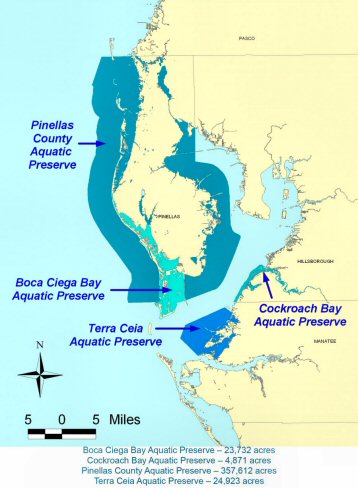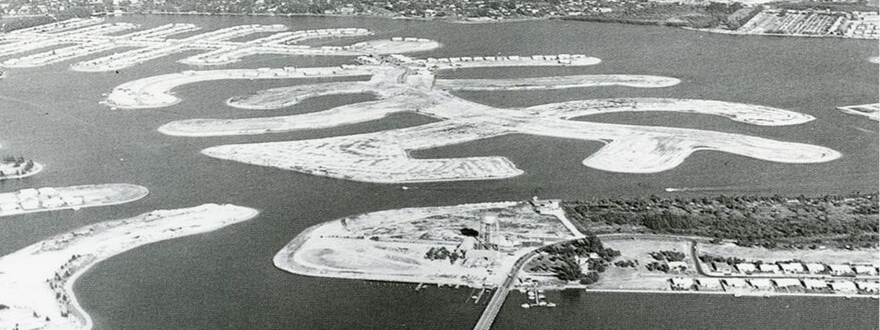 A new organization created to enhance protection and increase awareness of the Tampa Bay Aquatic Preserves is currently recruiting charter members to support the 380,000 acres of preserves bordering Pinellas, Hillsborough and Manatee counties.
A new organization created to enhance protection and increase awareness of the Tampa Bay Aquatic Preserves is currently recruiting charter members to support the 380,000 acres of preserves bordering Pinellas, Hillsborough and Manatee counties.
Formally established in December 2020, the Friends of Tampa Bay Aquatic Preserves is a 501(c)3 created to maximize recreational, social and educational opportunities, as well as provide financial support through fundraisers. The new organization is spearheaded by former legislator Roger Wilson and Rose Poyner, a 20-year veteran of the Florida Department of Environmental Protection (DEP) who is currently a science teacher for Hillsborough County Public Schools.
By Terry Fortner
“The Friends group is a way we can safeguard the natural conditions of aquatic preserves for future generations,” said Wilson, who sponsored the legislation that established the Boca Ciega Bay Aquatic Preserve in 1969, the state’s first legislatively designated aquatic preserve.
“It will become a valuable resource for the Tampa Bay Aquatic Preserve staff in their restoration, preservation, research and educational outreach efforts,” adds Poyner, who will serve as president of the new organization.
“Citizen support organizations help expand our resources and ability to ensure the sustainability of our aquatic preserves,” said Alex Reed, director of DEP’s Office of Resilience and Coastal Protection. “We look forward to working with the Friends to continue protecting Florida together.”
Preserves need protection

Aquatic habitats surround, nourish and sustain the Tampa Bay region. For as long as humans have inhabited Florida’s west coast, these waters and their abundance have supported our livelihood and enhanced our quality of life. Archeologists confirm the area known as Tierra Verde has provided favorable habitation for humans for thousands of years. From the shell mounds left by the First Floridians and the ranchos that flourished during Florida’s territorial period to the role that our waters play in promoting recreation and tourism today, it’s easy to see how a wealth of water resources bless this geographic location.
Serious efforts to preserve our aquatic habitats began a little more than 50 years ago. Although Florida had only 6.79 million residents in 1970 — approximately one-third the number of people who live here today — our region’s estuaries already faced significant challenges. Even then, decades’ worth of dredge-and-fill operations already had carved finger islands that had reshaped sections of our bays, while sea walls constrained the natural tidal ebb and flow along barrier islands. Rainwater laden with fertilizer, chemicals, pollutants, and the sheen of fuel and oil washed into the bay. Industrial facilities emptied effluent directly into our waterways and direct outfalls released barely treated sewage to the degree that 60 Minutes featured Tampa Bay in a 1974 program.

Something had to be done. The profound loss of seagrasses and marine life led some observers to declare large areas of Boca Ciega Bay and Tampa Bay “dead,” unable to sustain the aquatic plants, crustaceans and fish that had thrived for millennia. Wilson was one of the people that stepped up, sponsoring a bill that created the Boca Ciega Bay Aquatic Preserve.
Wilson’s leadership in creating the Boca Ciega Bay Aquatic Preserve set an important precedent. By September 1971, the Pinellas County Commission adopted, under home rule, a bill to halt dredge and fill in coastal waters. Under the provisions of the bill, all lands in the county were covered, which led to the establishment of Pinellas County Aquatic Preserve in 1972. By 1975, state lawmakers enacted the Aquatic Preserve Act, legislation that ensures Florida’s living waters will always be preserved for bird rookeries, fish nurseries, freshwater springs, salt marshes, seagrass meadows and mangrove forests. Today, Florida has 42 aquatic preserves, encompassing almost two million acres across the state.
Four of these preserves, collectively called the Tampa Bay Aquatic Preserves, exist in Pinellas, Hillsborough and Manatee counties. In addition to the original preserve at Boca Ciega Bay, these include the Pinellas County Aquatic Preserve that covers all waters in Pinellas, It also encompasses Cockroach Bay in south Hillsborough County and Terra Ceia in north Manatee County.

Randy Runnels, manager for Tampa Bay Aquatic Preserves for over 20 years, is presently assisted by Sara Brehm and Allie McClory, environmental specialists. Each of these DEP employees is a trained scientist, with the deep and wide skill sets required for handling equipment to work on, in and beneath the water, as well as the upland islands and wetlands. The DEP staff works year-round to restore and enhance the aquatic preserves through research, resource management and education.
For more information please visit tampabayaquaticpreserves.org or email friends@tampabayaquaticpreserves.org
About Terry Fortner: Inspired by family ties to Florida, especially Caladesi Island in Pinellas County, Terry is a long-time advocate for Florida’s natural resources. She serves on the Pinellas County Historical Commission, maintains ties to numerous area historical societies in support of Florida’s cultural heritage and helped establish the Friends of Tampa Bay Aquatic Preserves. She also works to promote her grandmother’s book, Yesteryear I Lived in Paradise.